Flowering plants
Aspidistra
Like all representatives of the lily family, this plant blooms – but it does so extremely rarely, especially in shaded areas. But you can be sure that even without sunlight, the flower will continue to grow, delighting you with lush greenery.
Aspidistra is not just a shade-loving indoor plant, but an absolutely unpretentious one: thanks to its strong roots, it will not even feel 1-2 missed waterings.
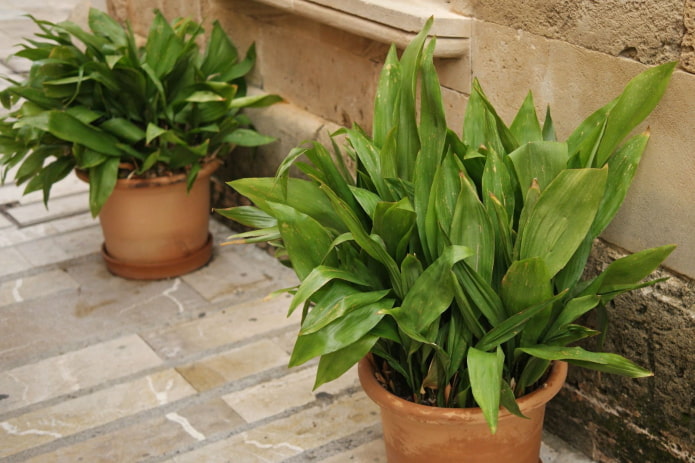
Important! Variegated varieties will lose their bright color without bright lighting and may become monochromatic.
Anthurium
A spectacular inhabitant of northern windows with large fleshy leaves. Its flowers are also large, the shade depends on the variety: from white to bright red, even black.
“Male happiness” cannot be called the most shade-tolerant indoor plant, but it feels quite comfortable without direct sunlight.
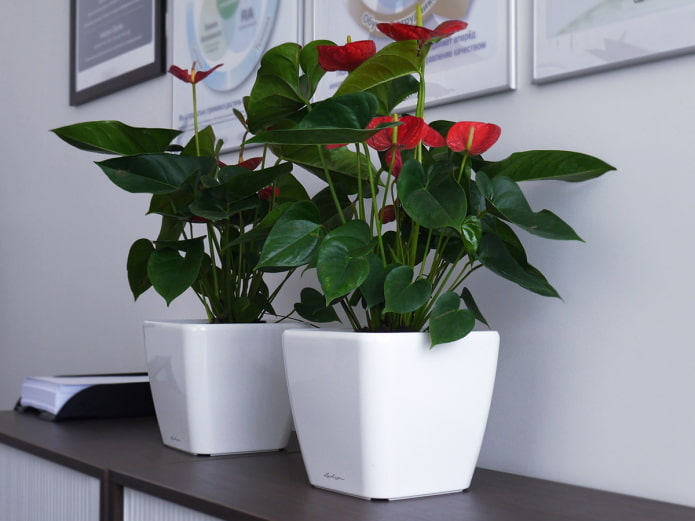
Poinsettia
This unpretentious plant is considered a Christmas flower in our country, and is sold mainly for the New Year. But proper care and timely replanting can do their job, preserving the beautiful spurge for many years. It grows well in the depths of the northern room.
To make the poinsettia bloom by Christmas, its sunny day is even artificially reduced to 10-12 hours, starting in November.
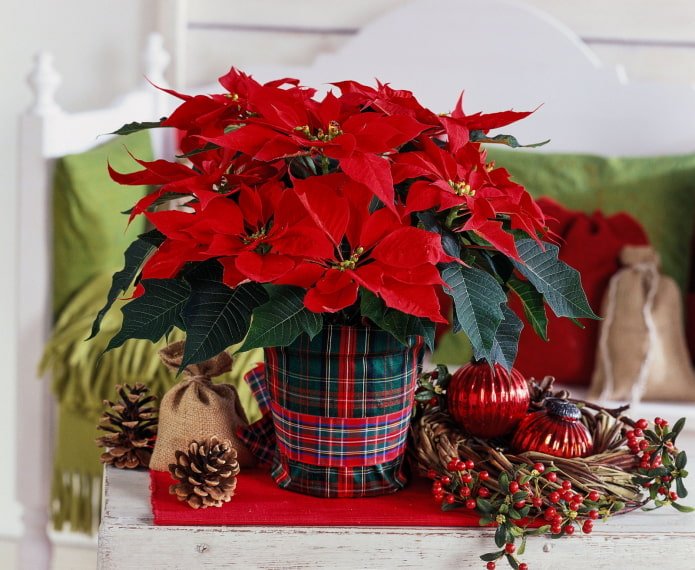
Phalaenopsis
The most common, unpretentious variety of orchids. This houseplant can live on a north-facing windowsill, but it needs additional lighting to bloom successfully.
Diffused light can be increased using reflectors (mirrors, foil) – in such conditions, orchids not only grow in the shade, but even bloom.
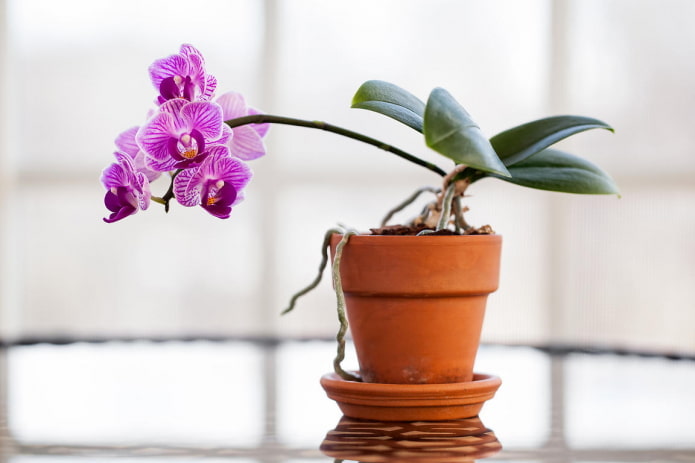
Fuchsia
One of those flowers that, despite their love of light, grow well and even bloom in the shade. Proper feeding, timely watering, and quality soil guarantee the beauty of the plant and long flowering.
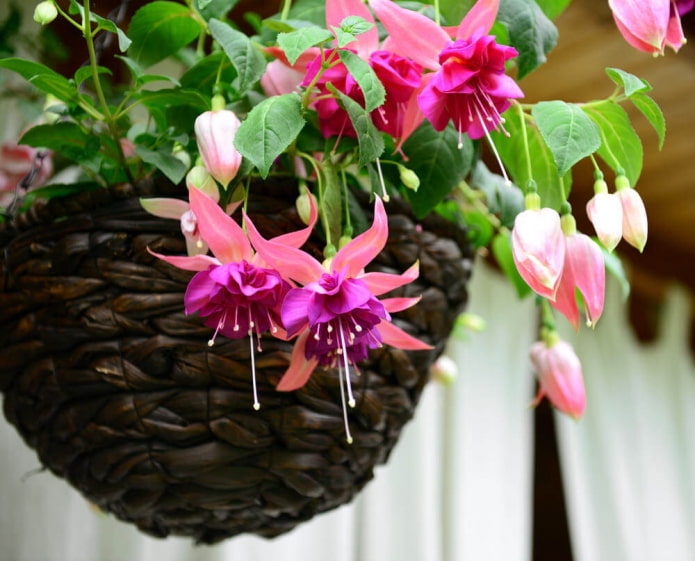
Decorative foliage
Aucuba
The most inept gardeners are always advised to grow cotoneaster on their plot. Aucuba is a close relative of cotoneaster, so it is a salvation for indoor floriculture.
A shade-loving and shade-tolerant flower with small variegated leaves is physically capable of growing where no other plant survives. Therefore, it can be easily placed in an unlit hallway or the far corner of the bedroom.
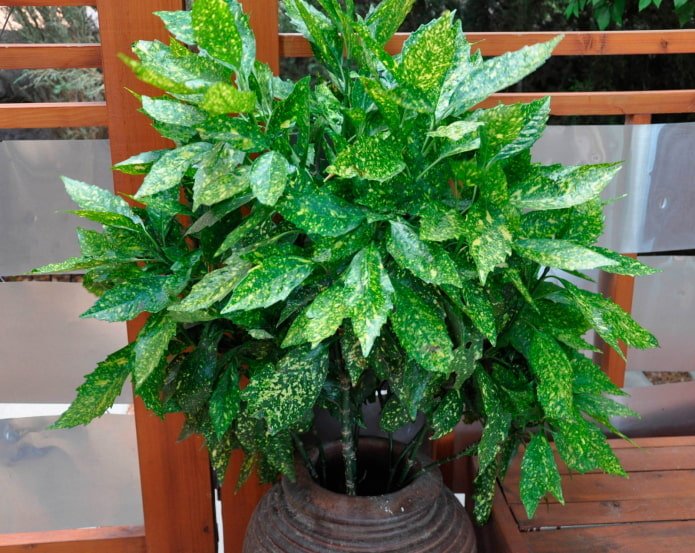
Sansevieria
This potted palisade can withstand truly Spartan conditions, which is why it has been grown in office centers since the Soviet era.
There are many subspecies, but the most common one has long, protruding flat leaves with a yellow border along the edge. There is also a small-leaved sansevieria, ideal for small spaces. Round-leaved ones are often braided into braids – it looks very decorative.
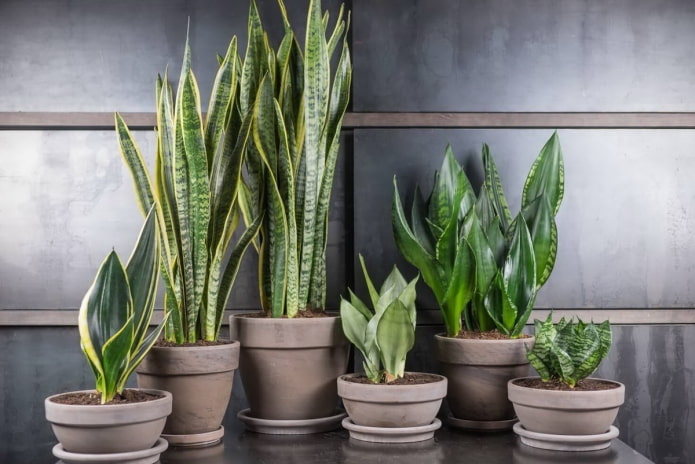
Aglaonema
Even without sunlight, this plant will not lose its bright color. It cannot be called 100% shade-loving, rather – suitable for any conditions, from shade to bright sun. The only thing it doesn’t like is a draft, so make sure to protect your plant from blowing air.
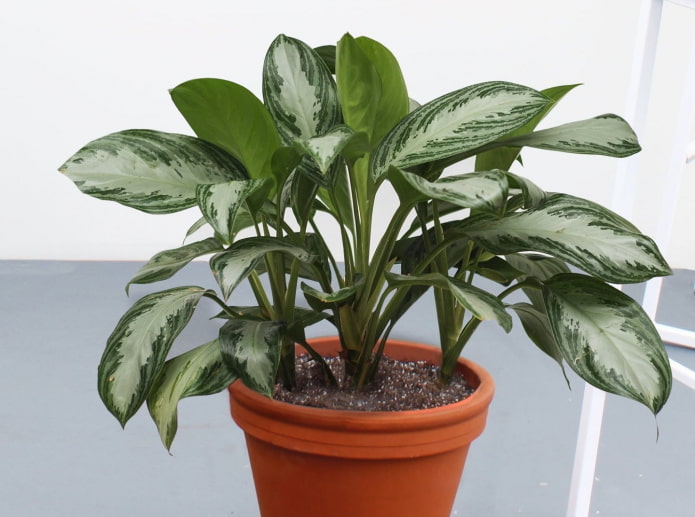
Advice! Aglaonema perfectly absorbs various toxins, so its ideal location is the kitchen or dining room.
Philodendron
The subspecies of this houseplant are strikingly different in appearance, but they have two things in common – an elongated leaf shape, independence from direct sunlight. The only caveat is that the beauty of the leaves (veins, unexpected colors – white, red, bronze, shine or matte) may not be revealed in the shade, but diffused lighting, including artificial, should help.
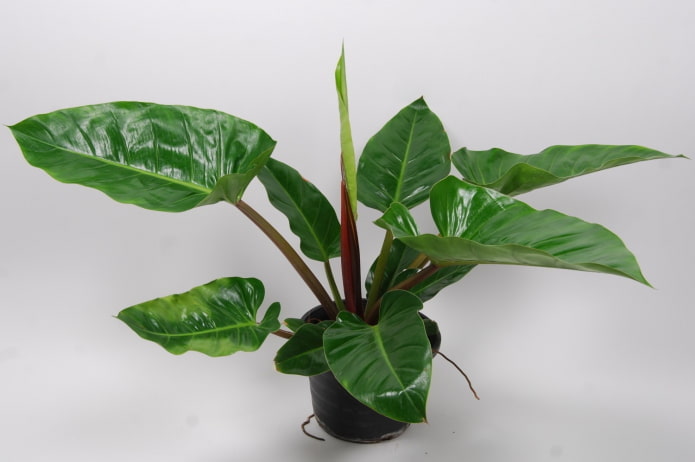
Fern
To make sure that you have a shade-loving plant in front of you, remember how ferns grow in nature – in the thick of a dark forest, where sunlight practically does not reach. The usual living conditions also tell us that ferns do not like dry air – the humidity should be high, so they are suitable even for the bathroom.
In the dark, cool, the plant feels good, does not require a change in climate during the year, a bright period of rest in winter, a phase of active rapid growth in summer is not observed.
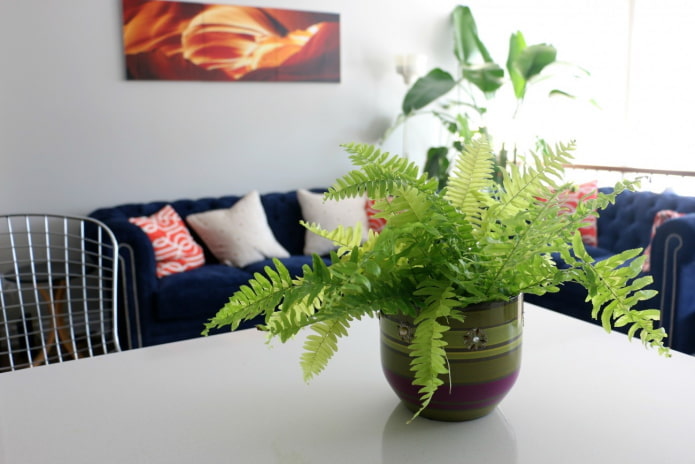
Advice! To reduce the number of waterings, mulch the soil with moss or other suitable material. And regular spraying will help increase the humidity.
Chlorophytum
A popular low green pet in offices and apartments. It has become widespread due to its minimal care requirements, beautiful appearance, and high air purification capacity. Several pots of chlorophytum in the bedroom of an allergy sufferer will allow them to breathe better even during the hay fever season.
The plant can withstand even complete shade, but for this it is better to grow it in the right conditions from the very beginning or gradually accustom it to the absence of light, shading it more and more each time.
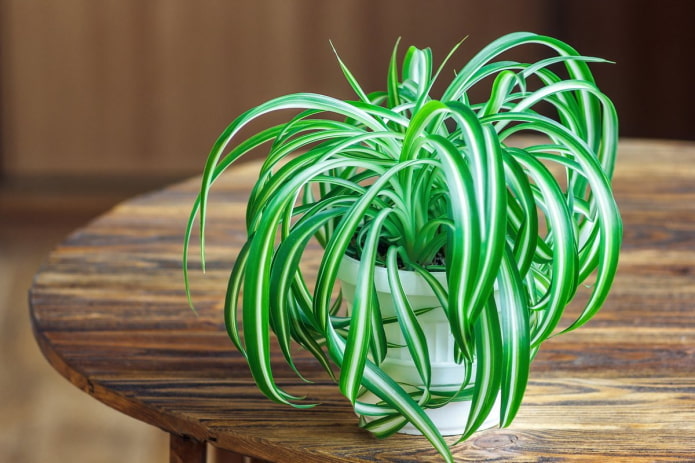
Soleirolia
An attractive cap of small delicate leaves in the wild belongs to the groundcover species. Since it originally grew on rocks under boulders, in dark crevices, the shadow of Helxine is not scary.
In general, the plant can be called fearless: it grows in warmth and coolness, does not get stressed by sudden changes in temperature or humidity, feels good in winter on a cool window or in a draft.
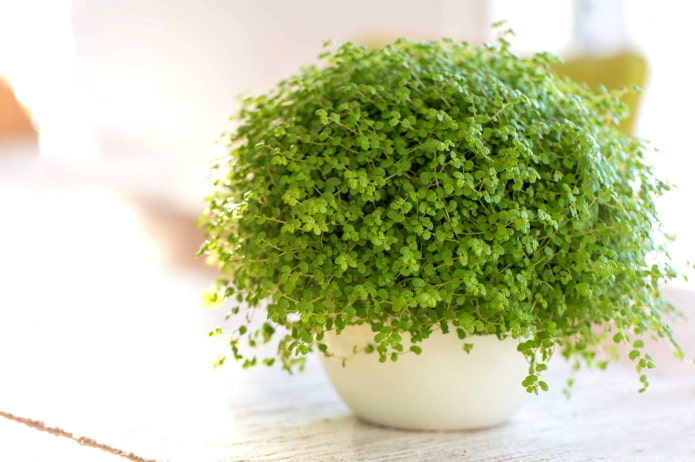
Climbing plants
Scindapsus
A beautiful, fast-growing, unpretentious representative of the Araceae has only one drawback – toxicity. But these shade-loving indoor plants can be placed under the ceiling without worrying that children or pets will be able to reach it.
Scindapsus is not so much a climbing plant as a creeping plant – it can be a hanging ampelous plant or curl upwards along a support like a liana. The coloring makes this plant decorative and leafy: in addition to the usual monochromatic (dark green or light, almost yellow), there are also those with white spots, white or golden streaks. Lack of sunlight will slightly affect the color, but will not erase it completely.
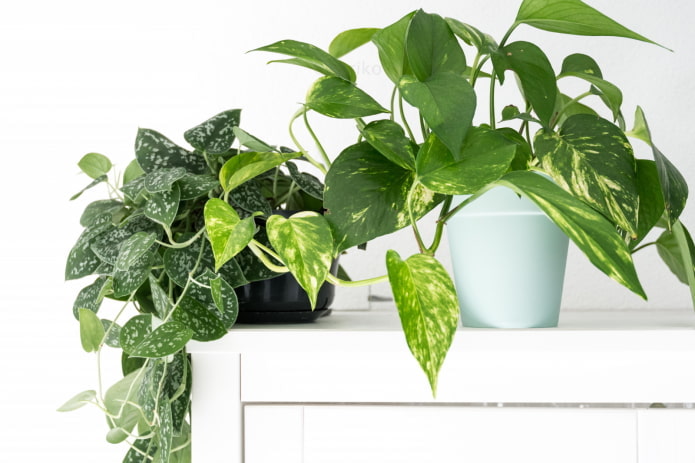
Tradescantia
A classic representative of ampelous plants known to many gardeners. By hanging the flowerpot on the wall or placing it on an open shelf, you will get a completely independent living decor that requires virtually no care. Tradescantia grows quickly, reproduces easily, and does not suffer from unsuitable soil or hard water.
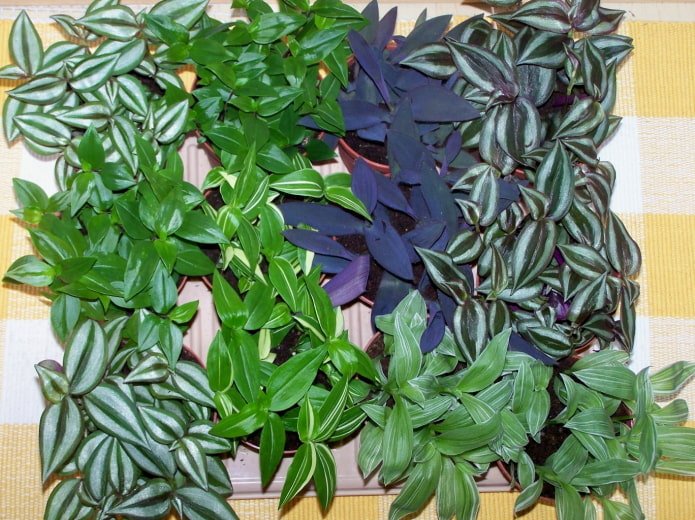
Ivy
None of the varieties likes direct rays, but the lighter the leaves, the brighter the place required for the bindweed. But the dark green representatives of the snakeweed grow easily even in absolute shade. Ivy requires supports and garters on which it can climb, so think about the location in advance, as it will not be easy to move the structure later.
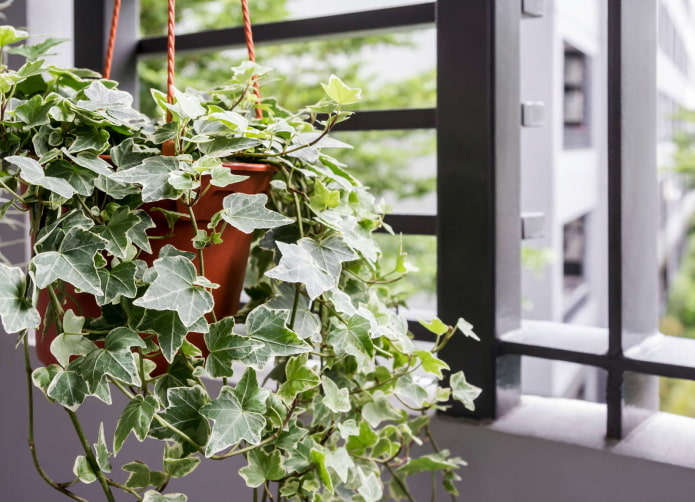
Palms and large-sized plants
Dracaena
A charming fluffy palm with narrow long leaves on a divided stem. It gets along well away from windows, in poorly lit corners. Its elegant appearance will help decorate any room: from an office to a bedroom or a nursery. For successful cultivation, ensure stable air humidity, temperature around 20-25 degrees.
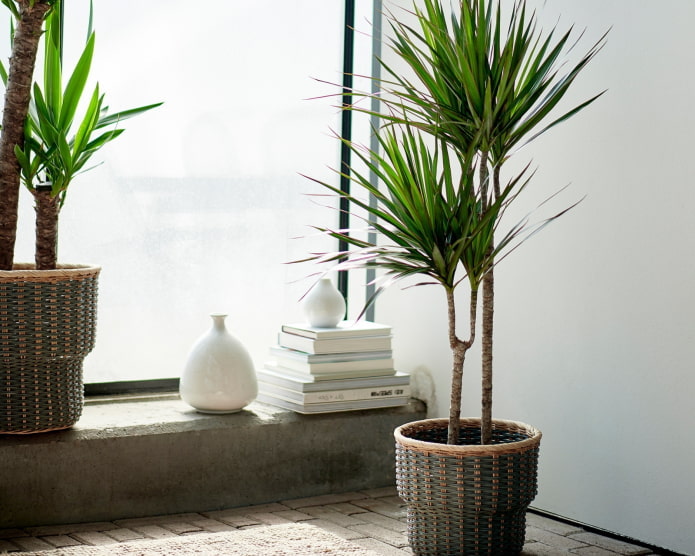
Monstera
As ferns grow in our forests, so monsteras live in tropical jungles – in the absolute absence of light, with very high humidity. When you get a monstera in your apartment, make sure that in the future you will have enough space for this powerful plant with huge dissected decorative leaves.
It grows quickly, taking up a lot of space around it – both in height and width.
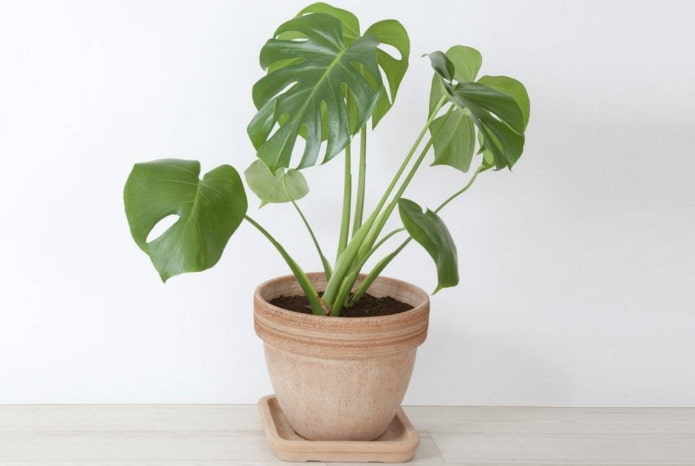
Important! Due to the size of the leaves, it is believed that at night the monstera absorbs oxygen, produces carbon dioxide – therefore, it is not recommended to keep it in the bedrooms. But it will be a wonderful decoration for a living room, dining room or office.
Alocasia
A decorative alternative to monstera with large, but narrow, fleshy leaves, distinguished by light, noticeable wide veins (seen in the photo).
It is undemanding to light, but makes a lot of demands on other aspects of care: air humidity, soil, soil composition, temperature stability, a sustained dormant period until spring. Therefore, alocasia is considered a plant for experienced housewives, because without understanding the nuances of care, the flower can simply be destroyed.

Plants that love partial shade
Zamioculcas
Because of its second name – the dollar tree – many consider it a relative of the money tree, that is, the crassula, and care for it as a succulent. But this is a fundamentally wrong approach, zamioculcas is from the araceae family, so it requires completely different care than succulents.
It can grow without direct sunlight, diffused light is still necessary – place the pot in a shaded place near a window or put it in a well-lit space for a few days once a month.
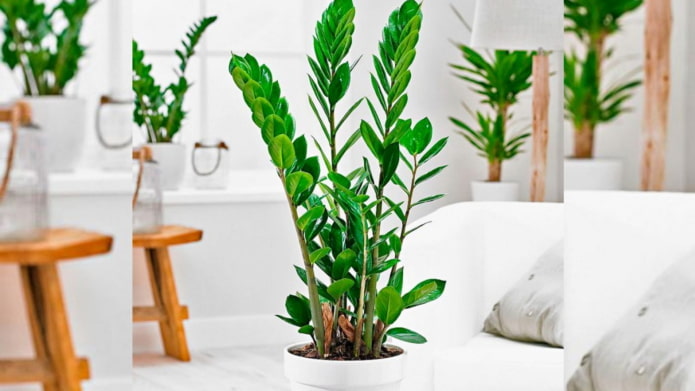
Important! Zamioculcas does not like neighbors nearby – it can wither itself or another plant can survive. Therefore, it is better to grow it away from other green inhabitants of the house.
Crassula
Fat woman or money tree does not belong to flowers that like dark places. But on any windowsill, be it a lighted eastern or shaded western one, it feels quite comfortable.
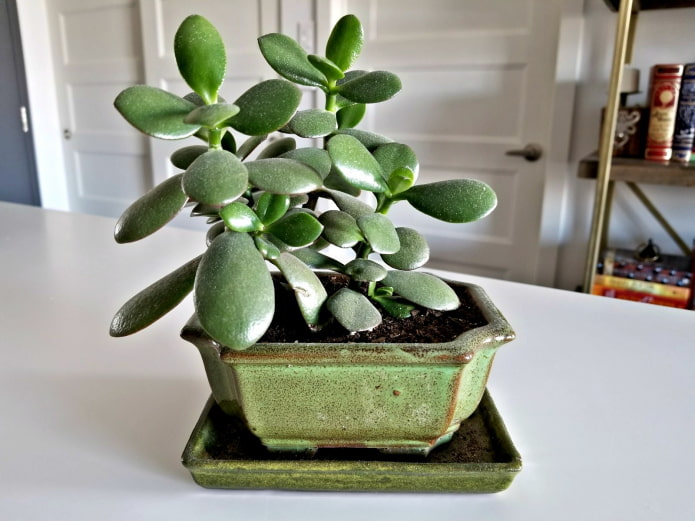
Important! In partial shade, home crassula should be watered as rarely as possible. With succulents, it is better not to water than to arrange a heavy shower once again. Spraying the fat woman is prohibited!
Ficus
There are an incredible number of varieties of this flower, so whether your houseplant is suitable for partial shade can be found out only by knowing its exact name. In fact, most ficuses do not suffer, do not die from lack of sun, the maximum that can happen is a slowdown in growth or a moderate decrease in the brightness of the color of variegated representatives.
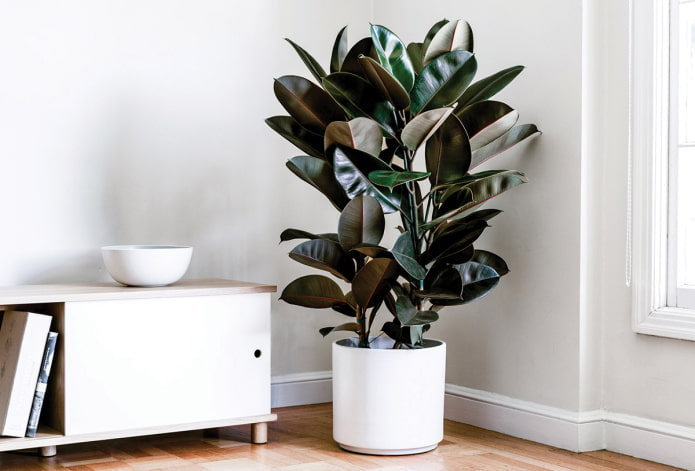
Spathiphyllum
The plant is quite harmful, but not in relation to the sun – it easily tolerates shade or partial shade. But it does not cope well with low temperatures (it needs warmth of at least 18 degrees all year round), drafts (it quickly dies with constant blowing). The only caveat is that with low light you will not wait for flowering, and the leaf will become smaller.

Do not choose a plant for the shade only by appearance. Before buying, also make sure that the flower will withstand the conditions in which it will live.
Now reading:
- Discover the Versatility of the Ford Transit Van
- Folding table: more than 60 photos of modern ideas for the living room, kitchen and children’s room.
- Affordable Products from Fix Price for Garden and Vegetable Garden Decor
- Explore the Fiat Freemont: Stylish Versatility Awaits!
- Curtains on eyelets: more than 60 photos for decorating a hall, kitchen, bedroom and children’s room